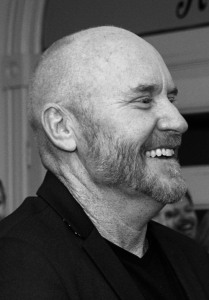Hello and welcome!
I am the author of the book Alive…All Alive, and the grandson of Francis McCarthy, one of the 25 missing Australians.
The tale of VH-CIZ is something I’ve researched on-and-off for twenty years now. And while at times it has been difficult to find the hours to research the story with the depth it requires, the journey has ultimately been fulfilling and somewhat cathartic for me.
 About the book
About the book
The circumstances surrounding the disappearance of the aircraft and the men on board, are baffling to say the least. This is a story about the dangers of “chancing your arm” and hoping for the best. It’s a story of bad luck, bad management, and a total disregard for safety procedures and protocols. It’s a tale that speaks volumes about the tragedy of war and how relatives never forget the men and women who don’t return home – even if their governments do.
This book has been written to provide a broader picture of the immediate post-war environment in the Southwest Pacific region during a unique period of time. It was a period where the Pacific War was winding down, while another, the Indonesian War of Independence, was ramping up. I believe that having an understanding of the military machinations of the region in December 1945 will show readers that the aircraft may well have gone down in an area that was far from benign.
The book explores the background to the event, the demobilisation period of the Pacific War, C47 aircraft, military radio, potential ditching and landing sites, the flawed Court of Inquiry, and a variety of service and operational records from the time. It takes a comprehensive look at similar events and their surprising outcomes, and it describes how the men might have survived or met their fate.
About me
I’m not obsessed with war, far from it – and I don’t like to glorify it either. But it’s the human stories of war that interest me. It’s trying to understand how seemingly everyday people keep going when the war has pushed their emotions, resilience, and fortitude beyond breaking point. And I’m still staggered by those little war-time nuggets that I stumble across while researching too. Stories of ordinary men and women doing extraordinary things, then packing it all up to return to civilian life.
I’ve trekked Kokoda in Papua New Guinea, visited the Australian War Memorial in Canberra, toured Sandakan where the dreaded Death March took place, and attended an ANZAC Dawn Service in Darwin, where this story is centred. These are all things that many Australians do to not only pay our respects, but to reach back into the past and get a feeling for what it was like back then. In that sense, investigating and documenting this story has at times drawn me back to 1945 so completely that I felt the need to take a break from it periodically – just to get my head back into matters of the present!
I don’t see myself as a war historian, nor do I see myself as a military aficionado, but I’ve worked hard to bring this story to light because I think it’s one worth telling. It’s a story I hope you enjoy reading as much as I enjoyed researching.
LEE MCCARTHY
AUTHOR
